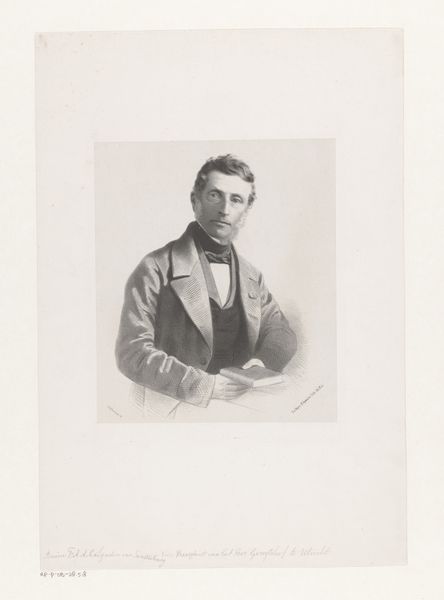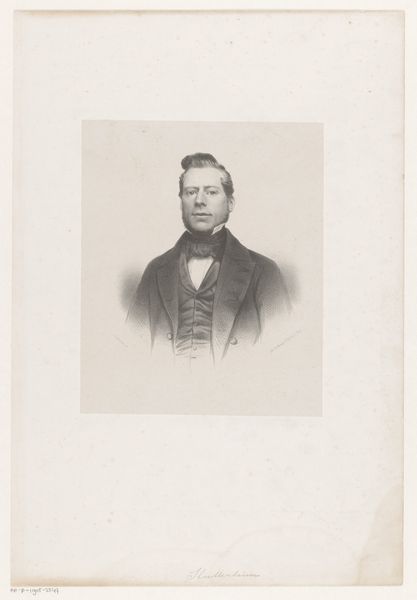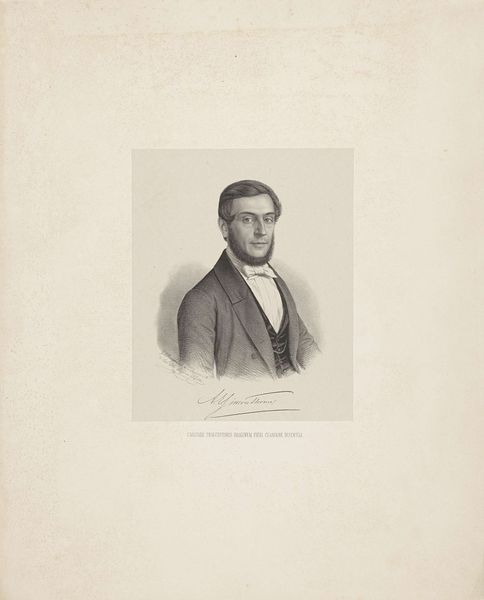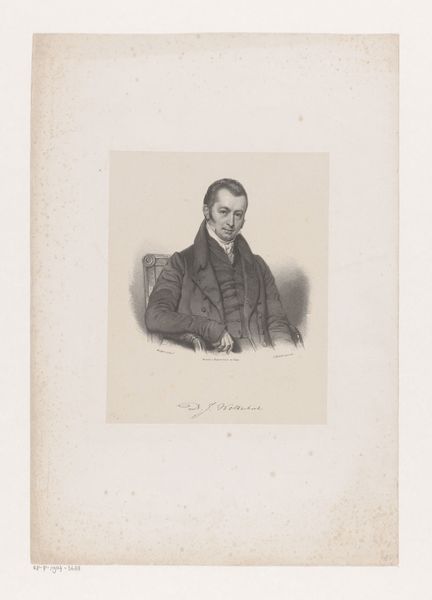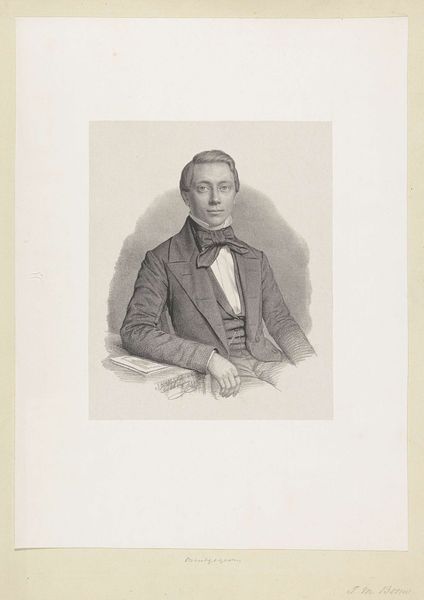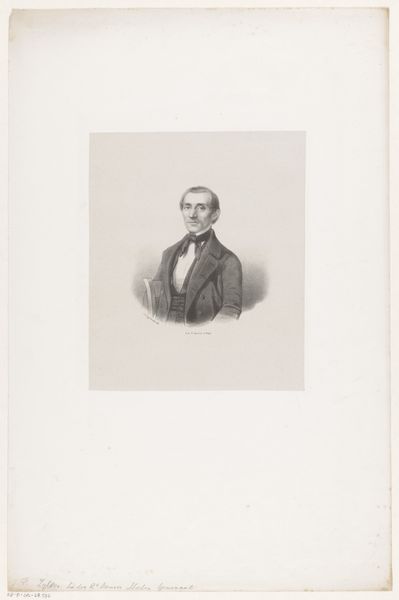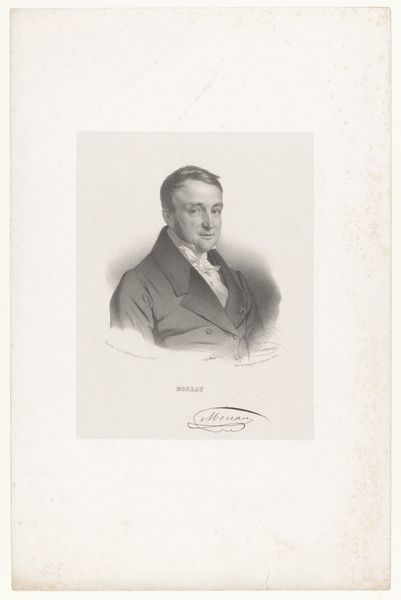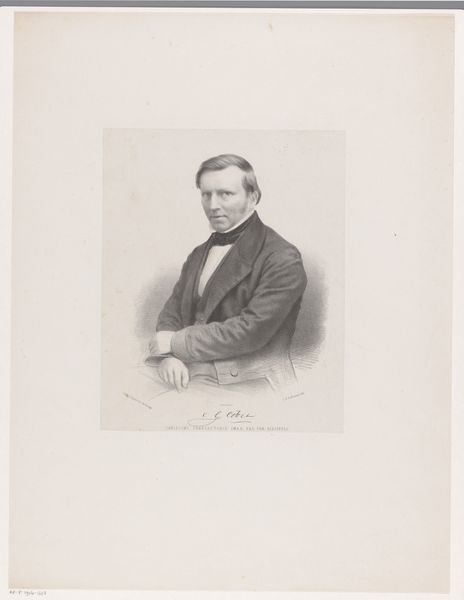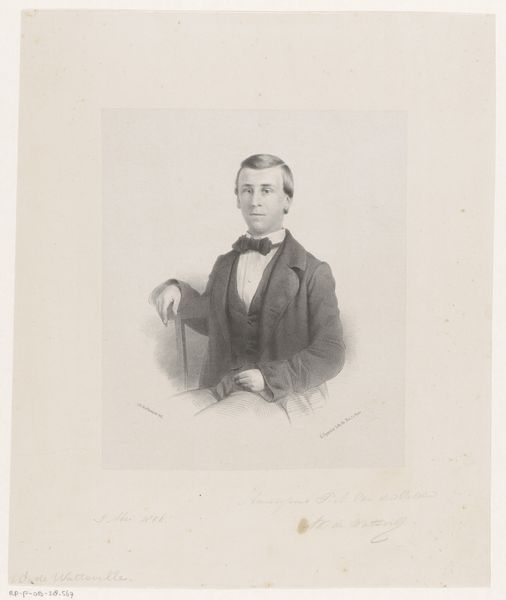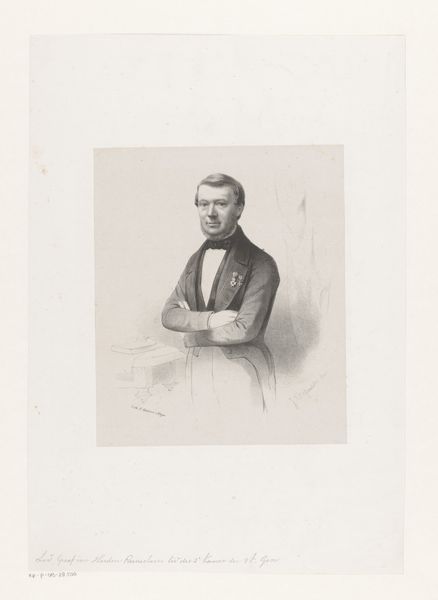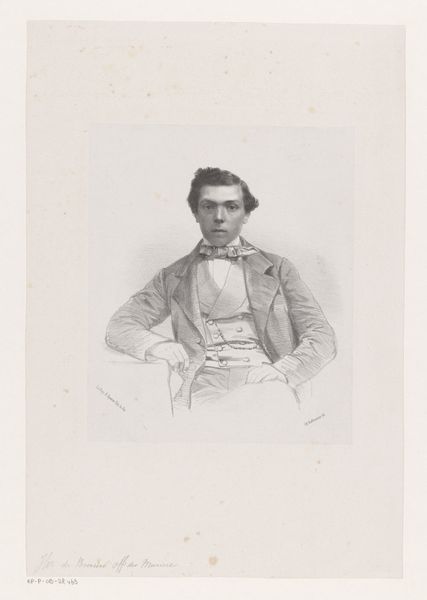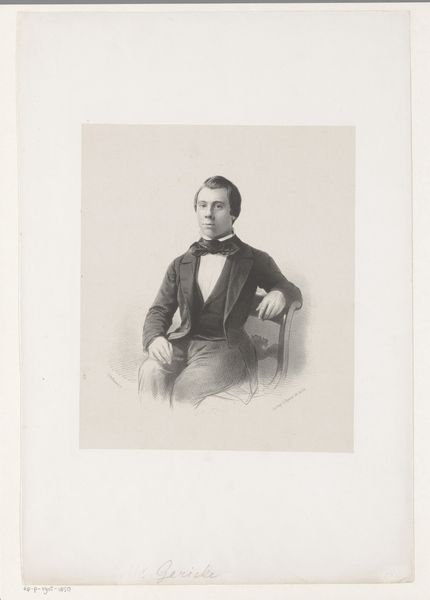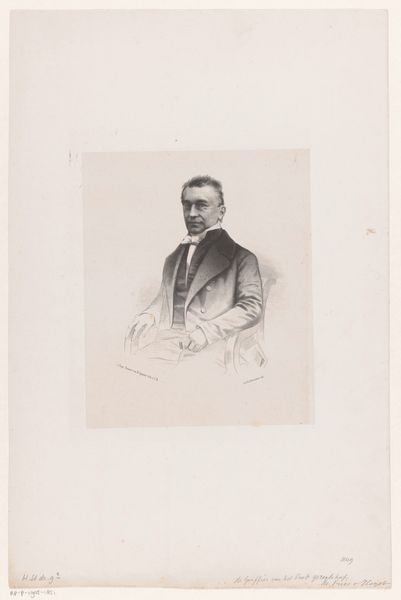
drawing, pencil
#
portrait
#
drawing
#
pencil drawing
#
pencil
#
portrait drawing
#
academic-art
#
realism
Dimensions: height 355 mm, width 282 mm
Copyright: Rijks Museum: Open Domain
Curator: This drawing captures my attention with its melancholic quality. There is a gravity in its execution. Editor: You're right. The artist, Johan Hendrik Hoffmeister, working somewhere between 1851 and 1883, rendered "Portret van apotheker H.C.M. Eikendal"—or, "Portrait of pharmacist H.C.M. Eikendal"—entirely in pencil. Curator: Pencil, a humble medium, yet consider the range of tonal values Hoffmeister coaxes from it. Observe the cross-hatching, especially around the face and neck, that build form. Editor: I’m interested in Hoffmeister’s choice to use such a widely available, easily procured material. Was it the choice of the artist, the sitter, or something about the social standing of either individual that suggested this somewhat prosaic medium for portraiture? Curator: A question worth considering! The sharp lines of his coat contrast with the softer gradations suggesting skin, revealing a technical prowess aimed at representing textures realistically. It is a powerful study in light and shadow, adhering, ultimately, to the formal conventions of portraiture prevalent in academic art. Editor: And portraits like this fulfilled a very particular need in 19th century Dutch society, serving to document profession and status. This pharmacist—what were his tools, his concoctions? Did the artist concern himself with any of that? It’s missing from the drawing. Curator: Perhaps Hoffmeister's decision to focus solely on the figure reflects a desire to transcend mere documentation. We're drawn not just to likeness, but to the overall impact of form and how these visual components interact. Editor: I suppose by understanding the materials and processes of art making, as in pencil drawing here, and then placing it within its time, we reveal those nuances. What were people supposed to think of Herr Eikendal, pharmacist? Curator: Absolutely. Hoffmeister provides us the key through compositional form itself. I’m more attuned to appreciate form as a mode of its own rhetoric, but that context grounds us. Editor: Yes, together, it completes the picture.
Comments
No comments
Be the first to comment and join the conversation on the ultimate creative platform.
